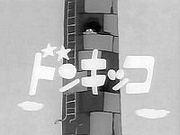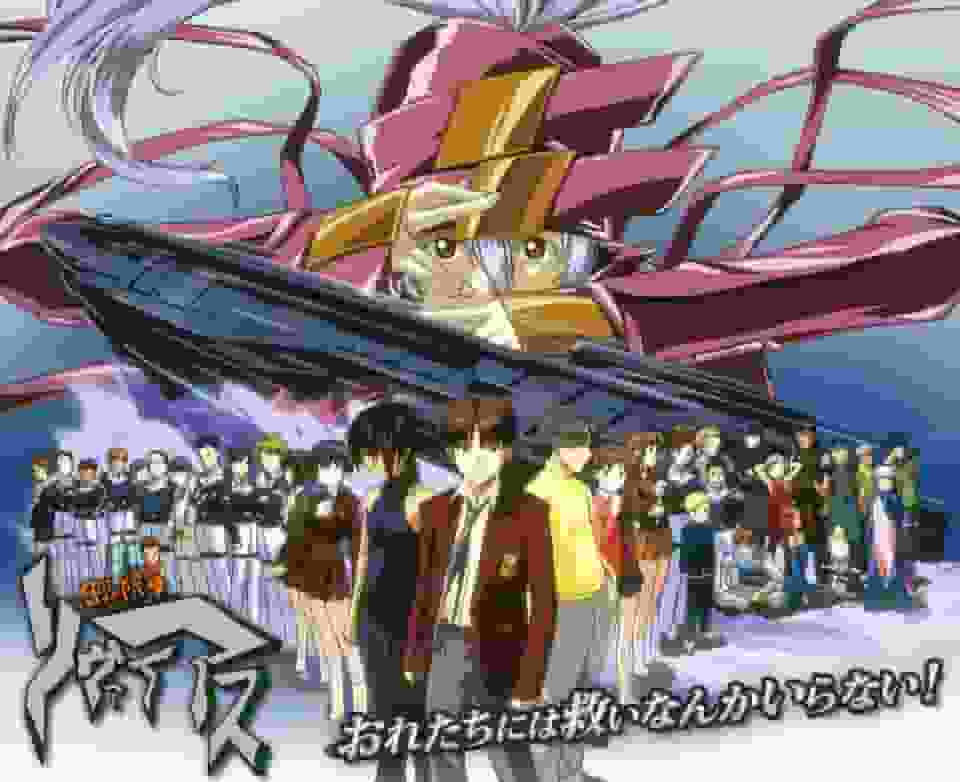The appeal and reputation of Don Kikko: A must-read review for anime fans

Donkikko: The charm of nostalgic comedy anime and its historical backgroundIntroduction"Don Kikko," which aired from 1967 to 1968, was a comedy anime based on the original story by Shotaro Ishinomori, and was loved by children at the time. This is a black-and-white anime that depicts the chaos caused by Don Kikko, a boy who moves from the countryside to the city, and his friends. Here, we will take a deeper look at the appeal of "Don Kikko," the historical background, and the details of the work. Overview
story■ StoryDonkikko and his minions, a boy of nature, come to the city from the countryside in search of "3rd Street 3rd Street". After becoming friends with a young girl named Ayame, the Donkikko are taken care of by Ayame's grandfather's antique shop, Wanwan-do, and begin living in a rundown train in the garden. From that day on, the Donkikkos cause a big commotion in the town, fighting against the spiteful old man, Mr. Tosenbou. Commentary■ExplanationA comedy anime depicting the chaos caused by the main character Donkikko, his minion Dondon, and the duck Gombe. It is in black and white. cast■Cast・Donkikko/Mitsuko Asou・Dondon/Takuzo Kamiyama・Gonbei/Kinya Aikawa・Ayame/Noriko Obara・Mr. Tosenbou/Genzo Wakayama Main Staff■ Main staff・Original story: Shotaro Ishinomori ・Animation production: P Production ・Directors and production: Koichi Ishiguro, Yoshio Nunokami ・Direction: Shunichi Yukimuro, Tadaaki Yamazaki, Kaoru Asakaze, Toyohiro Ando, Fumito Imamura ・Art: Koji Inamura ・Art: Junji Yamada ・Music: Keiichi Awano Main Characters■ Main Characters Donkikko A boy from the countryside who is a child of nature. He claims to be a descendant of Minamoto no Yoshitsune. He carries a Donkikko stick that can be transformed into a pen or a saber. subtitle■Subtitle Episode 1: "Don Kikko Appears" "Customers are Kind" (September 7, 1967) Theme songs and music■ Theme songs and music・OP1 Appeal of the work"Donkikko" is an appealing work with its unique sense of humor and the individuality of its characters. The main character, Donkikko, is a boy of nature who came to the city from the countryside and calls himself a descendant of Minamoto no Yoshitsune, which is an interesting setting. In addition, the gimmick of his Donkikko stick, which can transform into a pen or a saber, stimulates children's imaginations. Donkikko's minions, Dondon and Gonbei, also have strong personalities and have become characters loved by viewers. Dondon's setting of exhibiting superhuman strength when he eats is humorous, and the gag of Gonbei being able to speak human language despite being a duck was fresh. The setting, such as the Wanwan-do antique shop where the Donkikkos live and the dilapidated train in the garden, also stimulates children's sense of adventure. Furthermore, the confrontation with the mean Mr. Tosenbou provides tension and laughter in each episode. The gimmick of Mr. Tosenbou's giant pipe that can be transformed into a club is also another element that entertains viewers. Historical BackgroundThe late 1960s, when "Don Kikko" was broadcast, was a period of rapid economic growth in Japan. During this period, televisions began to spread to homes, and anime also became popular as a form of entertainment. Children's anime in particular often contained educational elements, and were expected to give viewers dreams and hope. "Don Kikko" was one such series, and its story of moving from the countryside to the city reflected the changes in Japanese society at the time. The fact that it was a black-and-white production also characterizes television anime from this era. Furthermore, the presence of the original author, Shotaro Ishimori, is also important. Shotaro Ishimori is a manga artist who later produced many popular works such as "Kamen Rider" and "Cyborg 009", and his unique worldview and character creation are reflected in "Don Kikko". The animation production by P Production can also be said to be the result of the technology and creative talent of the time coming together. Character AnalysisDonkikko is portrayed as a child of nature trying to adapt to city life. His Donkikko stick is a symbol of overcoming difficult situations and gives courage to the viewers. Dondon is a slightly dim-witted but kind-hearted character, and his superhuman strength symbolizes the power of friendship and unity. Gonbei creates comical scenes by using the characteristics of a duck and speaking human language. Ayame is a good friend to the Donkikkos, and her presence adds warmth to the story. Mr. Tosenbou is a mean character, but his actions and words are full of humor, which entertains the viewers. The appeal of the episodeEach episode revolves around the troubles caused by the Donkikkos. For example, in episode 1, "Donkikko Makes His Appearance" and "The Customers Are Kind", the Donkikkos come to the city and start living at the Wanwan-do antiques shop. This episode introduces the personalities and relationships of the Donkikkos, making them easy for viewers to relate to. In episode 4, "Run, Streetcar" and "Hungry Sumo Wrestler", Dondon's superhuman strength is shown in action, providing laughs for viewers. In episode 12, "Don't Cry, Donkikko" and "Peke the Thin-Haired", the friendship and bonds between the Donkikkos are depicted, moving viewers. These episodes have a good balance of humor and emotion, and are designed to keep viewers from getting bored. The appeal of musicThe theme songs for "Don Kikko", "Don Kikko" and "Don Kikko Song", are written by Fujiwara Norio, composed by Awano Keiichi, and sung by Yamamoto Kiyoko and Yamagishi Hiromi. With melodies and lyrics that are familiar to viewers, these songs play a role in livening up the worldview of the work. Additionally, Awano Keiichi is in charge of the background music, and effective music is used to liven up the atmosphere of each scene. Music is an important element in immersing viewers in the work, further enhancing the appeal of "Don Kikko". Achievements of the production staffThe production staff of "Don Kikko" brought together the technical skills and creative talents of P Productions to create a work based on Shotaro Ishinomori's original work. Directors Koichi Ishiguro and Yoshio Nunogami skillfully developed the story of each episode, entertaining the viewers. Additionally, animation artist Koji Inamura made a strong impression on viewers with his portrayals that made the most of the characters' individuality. Art director Junji Yamada realistically depicted the setting, such as the antique shop Wanwan-do and the dilapidated train, drawing the viewers into the world of the work. Thanks to the efforts of these staff members, "Don Kikko" has become a work beloved by many viewers. Viewers' reactions"Don Kikko" was loved by children from the time it was first broadcast. Many viewers commented that the Don Kikko characters' personalities and jokes were hilarious. Gimmicks such as the Don Kikko Stick and Don Don's super strength also stimulated viewers' imaginations, and many children dreamed of going on adventures like Don Kikko. Furthermore, the setting, with its antique shop Wanwan-do and run-down train, also gave viewers a familiar impression. The combination of these elements made "Don Kikko" leave a strong impression on viewers and gain many fans. Influence of the work"Don Kikko" had a huge influence on subsequent anime works. In particular, in the comedy anime genre, story developments that make use of the characters' personalities and gimmicks became common. Also, as an original work by Shotaro Ishinomori, "Don Kikko" continues to be loved by anime fans along with his other works. Furthermore, P Production's production techniques were passed down to later anime works, contributing to the development of the industry as a whole. These influences have made "Don Kikko" a work that has left its mark in the history of anime. summary"Don Kikko" is a comedy anime based on the original story by Shotaro Ishinomori that was broadcast from 1967 to 1968. This work depicts the chaos caused by Don Kikko, a boy with a natural side who moves from the countryside to the city, and his friends, and the combination of many elements such as the characters' personalities, comedy, music, and setting left a strong impression on viewers. Furthermore, considering the achievements of the production staff, the reaction of viewers, and the influence of the work, "Don Kikko" can be said to be a work that has carved its name into the history of anime. It continues to be loved by many fans as a nostalgic comedy anime even today. RecommendationIf you haven't seen "Don Kikko" yet, we highly recommend that you give it a watch. It is a must-see, especially for those who like comedy anime and Shotaro Ishinomori's works. It is also a great anime for children, so it's great to watch with the whole family. It is also recommended for those who want to feel the atmosphere of Japan's high economic growth period in the 1960s. "Don Kikko" is a timeless anime masterpiece that provides viewers with laughter and emotion. |
<<: The appeal and reviews of "Shadowman: Adventure Boy": An invitation to the world of adventure
>>: "Seven Children": A deep review and review of this masterpiece of folk songs
Recommend
Masked Ninja Akakage: The Appeal and Evaluation of Classic Ninja Anime
Masked Ninja Akakage - A Ninja Story from the War...
"Yowamushi Kemushi": A moving story based on everyone's songs and its evaluation
The charm and evaluation of the weak caterpillar ...
Japanese netizens petition to delete the scene where Nobita peeks at Shizuka taking a bath: This is a criminal act
Many people have watched the anime "Doraemon...
The live-action movie of the classic comic "The Promised Neverland" officially announced that it will be released on December 18
The live-action movie of the classic anime "...
The main art image of the final season of "Attack on Titan" animation is released. A quiet cottage with blue sky and green land
The manga of "Attack on Titan" has been...
Ashita no Joe 2 review: The soul of boxing and the depth of drama
Tomorrow's Joe 2: The soul of boxing and the ...
The movie "Aquaman 2" released a preview trailer and will be released overseas on December 20
On September 11, the movie "Aquaman 2: The L...
No Guns Life: The appeal of a cyberpunk world view and deep story
NO GUNS LIFE: A hard-boiled story set in a cyberp...
Guo Jingming's "Jade Dynasty 2" announced that Fan Bingbing and Wu Yifan will return
"Jade Dynasty 2: The Cold Blooded Banquet&qu...
The appeal and evaluation of "I Found a Good Guy!": A new masterpiece of everyone's songs
The appeal and evaluation of "I Found a Good...
Japan holds a bizarre horror theme "Disappearance Exhibition" which is a big hit. What is true horror?
Horror-themed works have always been enduring and...
The appeal and reviews of "The Thousand Noble Musketeers OVA": A must-see special edition for fans
"The Thousand Noble Musketeers OVA" - H...
The new animated film trailer of the famous game "Corner Pets" will be officially released in November
The masterpiece of the super cute healing game se...
A thorough review of Pokémon Diamond and Pearl: Pikachu's Mysterious Adventure!
Pokémon Diamond and Pearl: Pikachu's Mysterio...
Trigger's Cyberpunk 2077 spin-off animation opening OP released
Today (July 4), Netflix released the opening anim...









